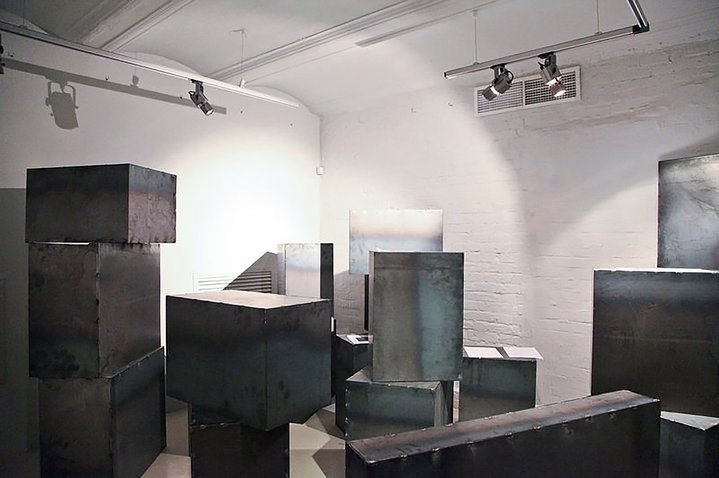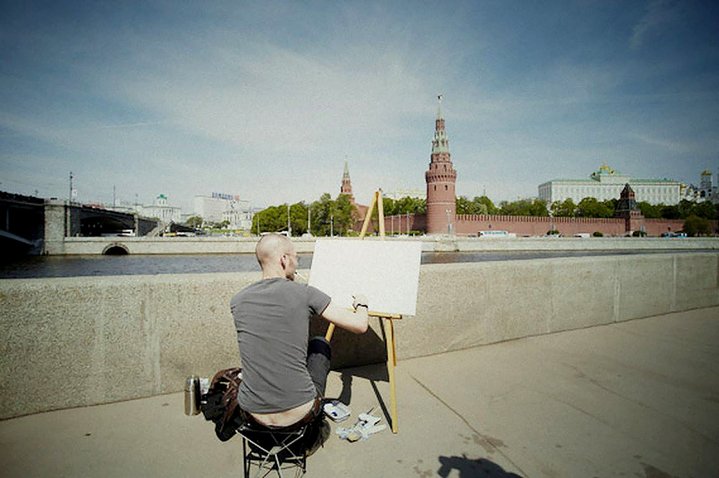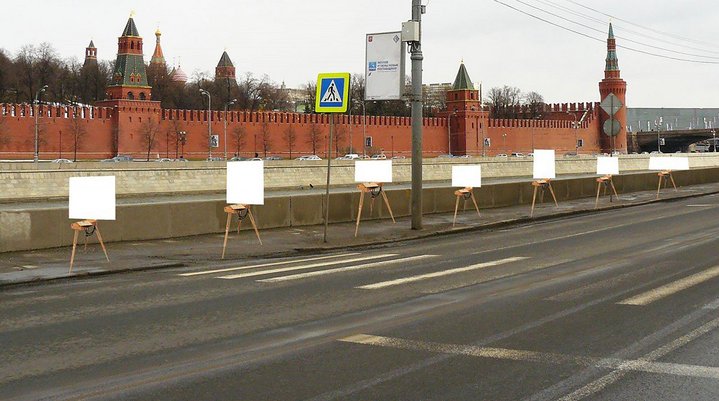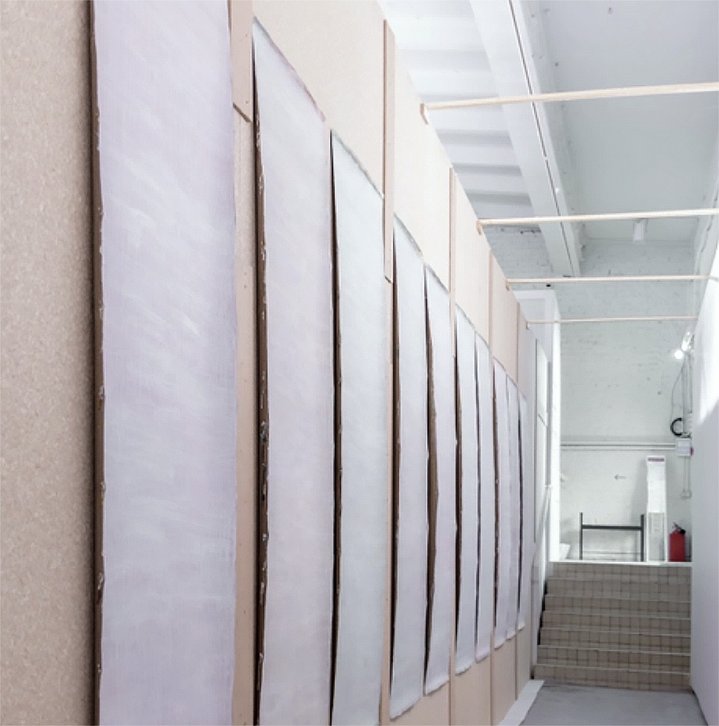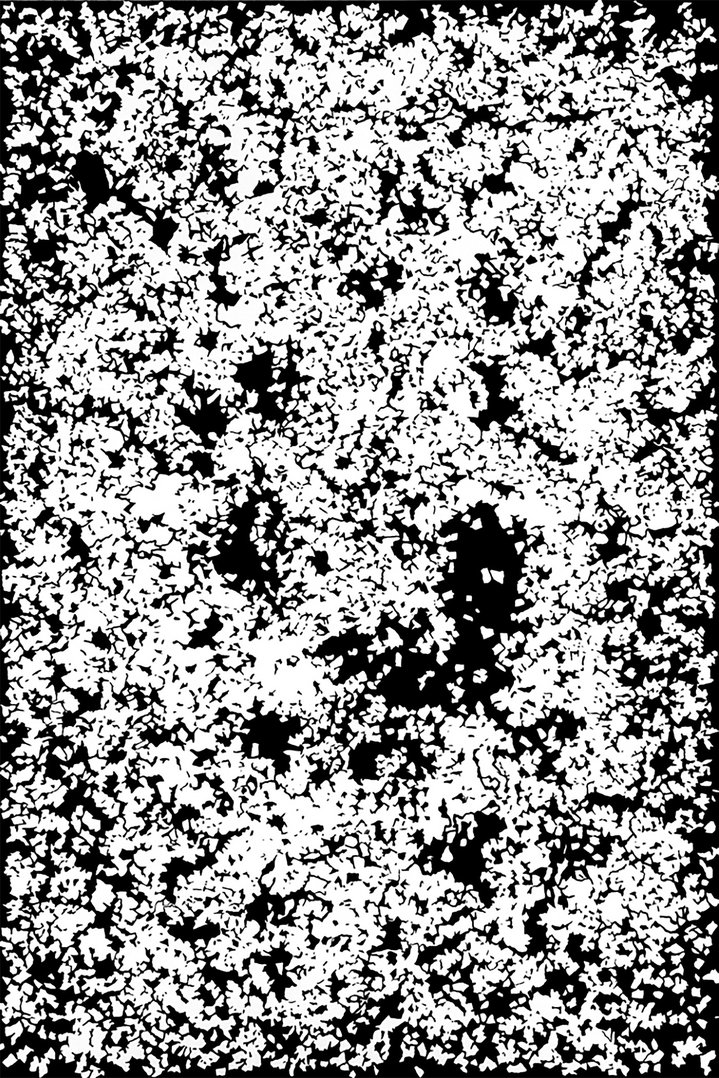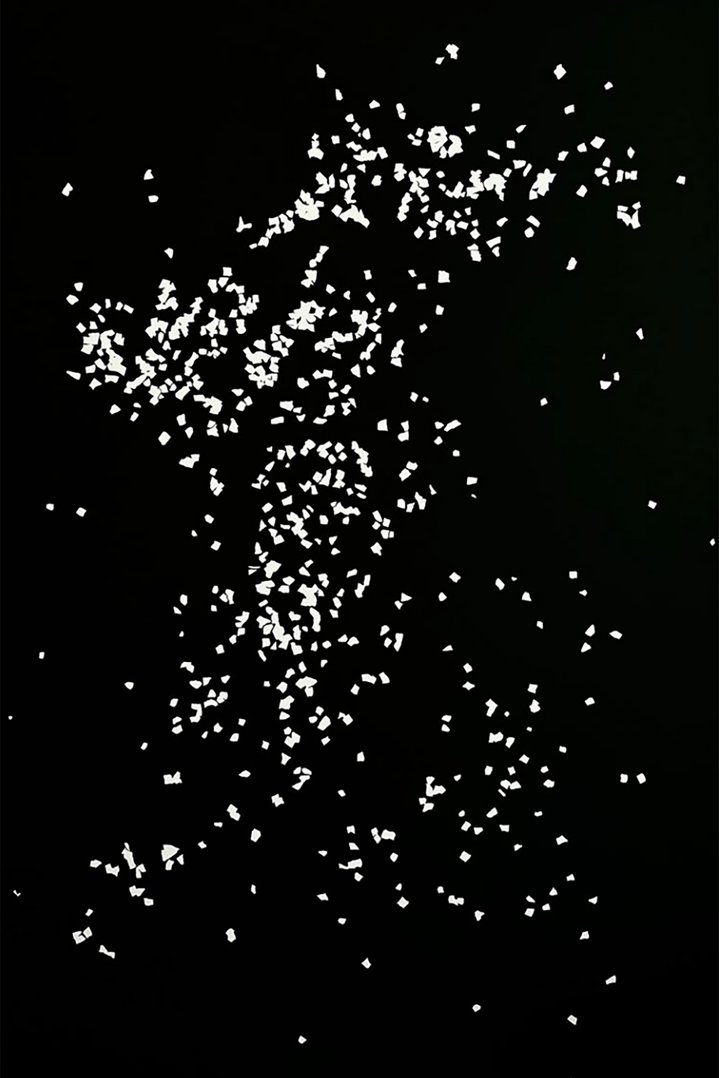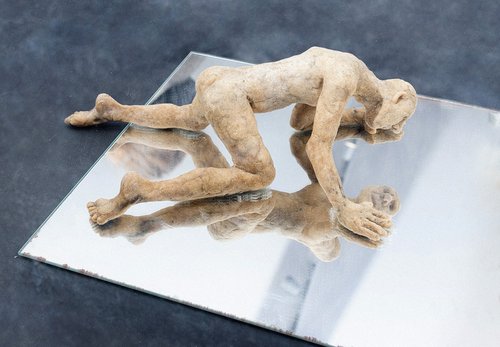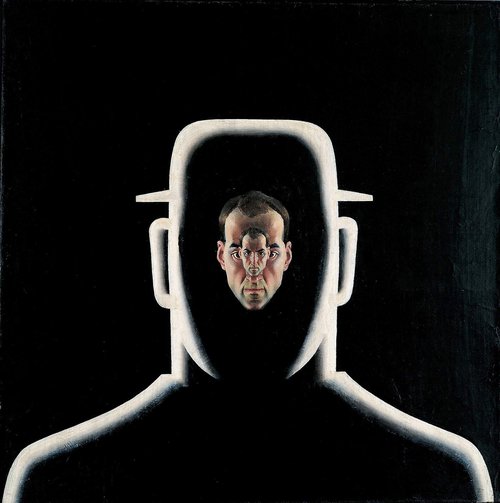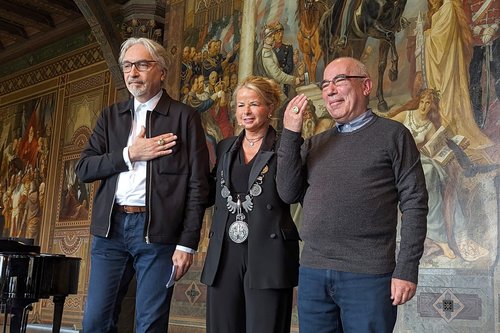Lydia Zhudro. Entropy, 2022. Courtesy of the artist
The Subtle Art of Silence
Over many years Russian artists have been engaging in practices of silence. How does this strategy work today?
People react to shock in different ways. When faced with extremes of violence we often go numb. In a world tumbling into an abyss of cruelty and destruction, silence can seem the best possible strategy. At least, for professionals in the field of art and culture. Nowadays Teodor Adorno’s famous maxim ´To write poetry after Auschwitz is barbarism´ is quoted on every possible occasion. Ever since the fateful day when Russian troops entered Ukraine on February 24, 2022, the moral dilemma of making/not making art has become of momentous importance for Russian artists, whether at home or in exile. “Maybe this is not the right time for artists to rush headlong into all these exhibitions. Maybe writers should keep quiet for at least a year? Russian culture must learn to be silent,” declared artist Vadim Zakharov (b.1959) in an interview with Radio Liberty (a media outlet which has been declared a foreign agent by the Russian authorities). However, the words of this established artist who represented Russia at the Venice Biennale in 2013, have sparked controversy among the artistic community. The main counterargument being that artists cannot live without making art. If you ask them to stop, is like telling a bird to stop singing.
“Criticism or, as Adorno put it, accusations of barbarism, should not be directed at artists or poets, but at the cultural industry as a whole. But artists are dependent on it now, they cannot do anything without exhibiting, printing, producing, or advertising” opined Israeli art historian Lola Kantor-Kazovsky. Soon after the Hamas attack on Israel on 7th October she wrote a post on social media asking for examples of ´silent´ artistic practices which prompted an avalanche of responses from artists and academics. At least one influential cultural institution in Russia switched to silent mode after 24 February: the Garage Museum for Contemporary Art, founded and funded by Roman Abramovich and Dasha Zhukova. Its exhibition program has been put on indefinite hold and its exhibition spaces have been turned into a library. Zakharov himself tried to produce minimalistic ´silent´ art with a political dimension. During the opening of the Venice Biennale in April 2022 he stood in front of the Russian pavilion which had been shuttered and held a poster condemning the country’s actions in Ukraine, at the same time a reminder to the public that he represented the nation in that very pavilion in 2013 with his project Danaë. One of his recent works is a homage to John Cage’s iconic masterpiece 4´33¨. It is called ´4´33¨ Minutes of Silent Political Action in Support of Freedom of Thought´. The participants of the action went to places that were meaningful to them and spent 4´33¨ minutes with their mouths sealed with duct tape, recording ambient sounds. When an artist is lost for words, is it not time for nature to speak? Tellingly perhaps, most participants went to crowded urban locations recording the noises of a metropolis, the sound of humanity going about - business as usual.
Other artists share Zakharov’s craving for silence. In the forest near his dacha in the small village of Volodino in the outskirts of Moscow, Vadim Kruglikov (b. 1960) is staging ´exhibitions without visitors´ ridiculing conceptual art´s elitism by driving it to the extreme. “I have intentionally and rigorously got rid of optional but rather important features, the presence of which in some combinations distinguish an exhibition from other phenomena observed in our lives like a cyclone or a bar mitzvah. I got rid of the audience, the buffet, the content of the exhibition, the concept, and the time the exhibition was to take place. Now I've decided to dispense with the exhibition space too so that it is simply not known where what isn't happening is happening, and it's quite difficult to arrive there to encounter something beautiful. There is one more such optional but important feature left – the presence of the artist.” The exhibition itself can consist of a single rope from which pictures might be hung, but they are not. Or, more menacingly, of a rope with a loop and a slipknot hanging from the tree. Posted on social media, these images provide a caustic comment directed at the otherwise incessant flow of photographs from exhibition openings posted by fellow artists. Meantime in Tbilisi, theatre director Vsevolod Lisovsky (b. 1967) who fled Russia after being detained for 15 days for one of his street performances, has been organizing silent poetry readings in exile, together with a fellow émigré, curator Konstantin Shavlovsky. These productions are the epitome of minimalism: a performer reads poems silently from the screen of his/her smartphone. A link to the selection of poems is sent to the members of the audience before the performance. They can read along in silence on their own phones or watch the facial expressions of the performer. The poems have all been written by Russian-speaking poets over the past year and a half and address the subject of the Russian armed invasion in Ukraine so the poems seem poignantly relevant to the audience which mostly consists of Russians in exile.
Censorship and self-censorship are the main reasons why artists in Russia turn to a practice of silence to express their reaction towards current events. When you are not allowed to protest, even a blank sheet of paper can be a sign of protest. At ´Subtle Citizens´ an exhibition in Moscow’s Museum of Modern Art which opened in July last year and was planned long before 24th February, some artists chose to remove their works and replace them with sheets of paper with statements: ´The artist(s) have refused to take part in the exhibition´, ´I am taking my work down and can’t even explain why´. The exhibition was closed the day after the opening. Ivan Novikov’s (b. 1990) solo exhibition ´No´ in the summer of 2022 at the pop/off/art gallery consisted of just empty frames on the walls. To what is the artist saying ´No´? In today’s Moscow, no explanation is needed.
This all shows that, for practices of silence, the context is vital. It is a kind of paradox that the very act of being silent requires that others listen or hear about it. It requires finding the right moment, the right place, the right audience and last but not the least, the right cause for protest. Some visual metaphors are self-explanatory: a mouth which has been sewn together is a powerful symbol for the absence of freedom of speech. Several artists have done this with various degrees of success. In the late 1980s American artist and activist David Voinarovich (1954–1992) had his moth sewn together with red thread to protest against the discrimination of LGBTQ+ people and the silencing of the AIDS epidemic. In 1995 Russian artists Oleg Mavromatti (b. 1965) and Emperor Vava (b. 1962), members of the ´Sect of Absolute Love´ sewed together each other’s mouths. This performance called ´Divine Providence´ took part at the now defunct Centre for Contemporary Art in Moscow (CCA). Both actions went largely unnoticed outside the art community. Yet when Pyotr Pavlensky (b. 1984) repeated this painful exploit in 2012, protesting against the infamous Pussy Riot case, the image went viral. During his action ´Seam´, he stood with his mouth sewn in a silent solitary picket in front of the Kazansky Cathedral in the centre of St Petersburg. The action got extensive media coverage both within Russia and internationally. Pavlensky with a sewn mouth became the poster boy for the exhibition ´Politics in Art´ in Krakow, Poland which opened in April of 2022.
Another context-based performance was organized by Anton Litvin (b. 1967) on 12th May 2012. ´The White Canvases´ action took place on the Moskva river embankment opposite the Kremlin. A group of artists went out to paint en plein air yet their canvases remained pure white. Some did not touch the canvas at all, while others painted the cityscape and their fellow participants with white paint. This harmless absurdist stunt turns into a demonstration of reckless courage in the current political climate. Just a week earlier, on 6th of May, a peaceful protest march attended by about 100,000 people was brutally dispersed by police on Bolotnaya Square. Some participants in the march were arrested and later sentenced to prison terms of up to three and a half years. During the 2011-2012 political upheavals in Russia white was used as the colour of protest: participants of marches and rallies carried white ribbons as a sign of their peaceful intentions. It was impossible to predict how the authorities would react to an action like ´The White Canvases´, the police quickly arrived and passively watched the performance. Nobody was arrested. The action was later long listed for the next edition of the coveted Kandinsky Prize.
Sometimes, practices of silence reflect a personal or creative rather than political crisis. Sergey Mironenko’s (b. 1959) ´I Have Nothing to Say in the Language of Art´ was created in 1990, during the collapse of the Soviet system, when underground artists were entering the irresistible yet perilous waters of the art market. In his 2011 performance ´Everything is Ahead´ artist Andrey Kuzkin (b. 1979) sealed up all his belongings, including his passport, and the works of art he had produced to date in steel boxes to be opened in 2040. This ultimate act of rejection, of starting from zero, of silencing his own voice, seemed to work well because from that moment on, his career has been gaining momentum. Earlier this year young artist Lydia Zhudro tore up into little pieces the papers in her personal archive to create a series of black and white paintings depicting these scraps. “Sometimes you need to get rid of your past in order to carry on living”, she told me recently. For those who have been made speechless by the tragic events unfolding around them, and for those who do not dare speak out, can a streak of silence also become the first step towards a new beginning?







